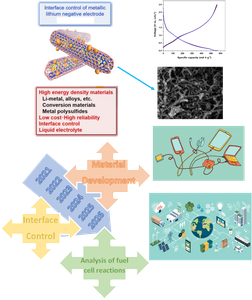Kasetsart University, Department of Chemistry, Bangkok, Thailand
Development of next-generation storage battery that exceeds current Li-ion battery (LIB)
Rechargeable batteries have become quintessential energy storage devices in our lives. Evidently, their development has led to the widespread use of portable electronics such as smart phones and laptop computers. Most of the portable electronics in the market today incorporate rechargeable lithium-ion batteries as a power source, for their lightweight and small-size (and thus portable). The performance of rechargeable lithium-ion batteries has greatly improved over time. However, the technology now stands at a point where it has begun to face hurdles in meeting the world’s gigantic energy demands in a sustainable manner. The hurdles faced are due to the limitation associated with the minimum size/weight threshold and the projected paucity of the terrestrial reserves of lithium (as well as other constituent battery materials such as cobalt), hence its cost effectiveness.
High performance rechargeable battery systems are imperative to meet the increasing demand for energy storage devices that can be used, for instance, to load-level the power output fluctuations for renewable energy sources and for electric cars. To develop the next generation rechargeable battery systems that confer various performance metrics such as high reliability, high levels of safety, high energy/power density and low cost, this research group focuses on carbon and alloy anode materials that rely on multi-electron reactions. Low-cost energy storage technologies such as lithium-ion batteries are also pursued. In addition, emphasis is also placed on the development of technologies that control the electrode/electrolyte interface.


